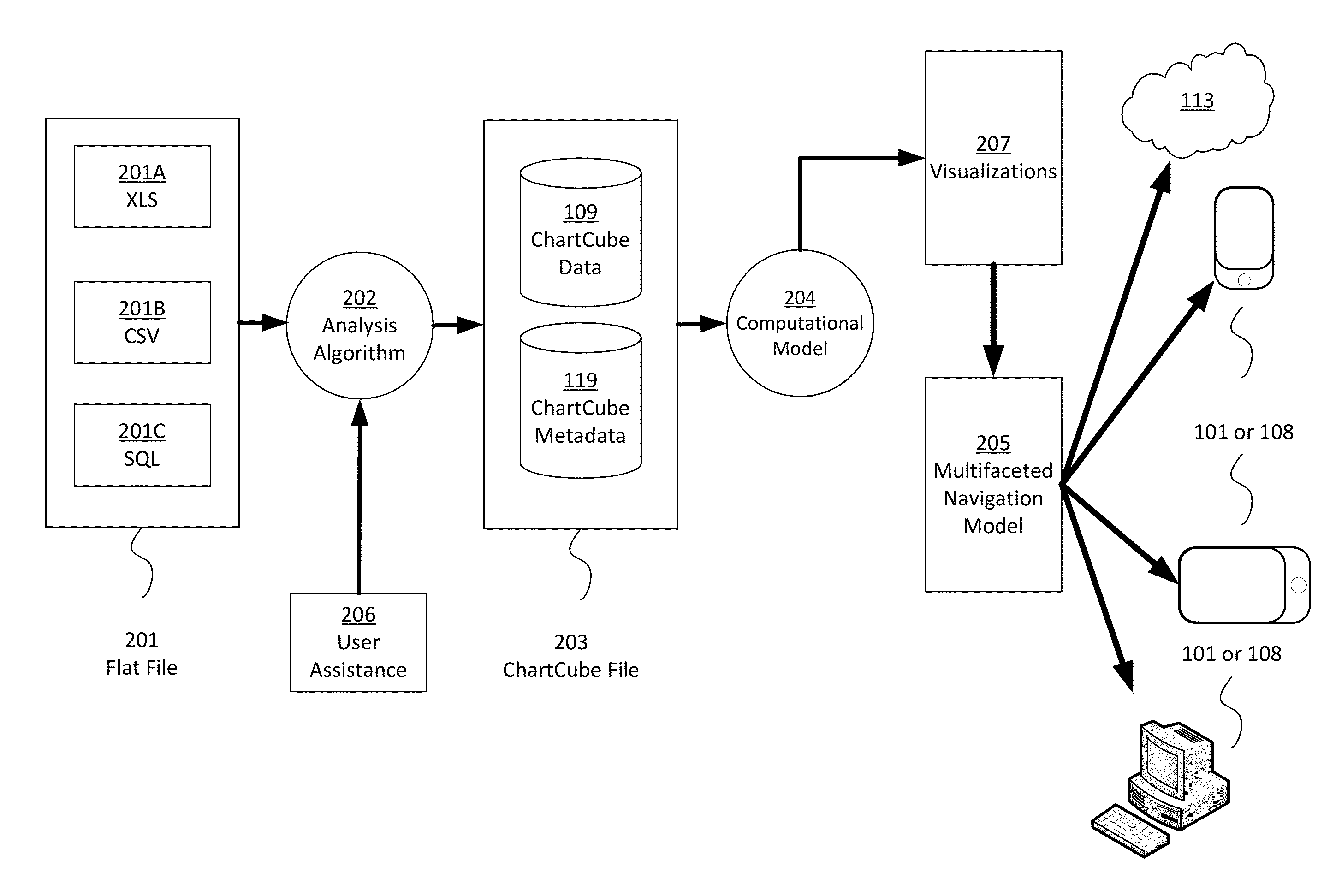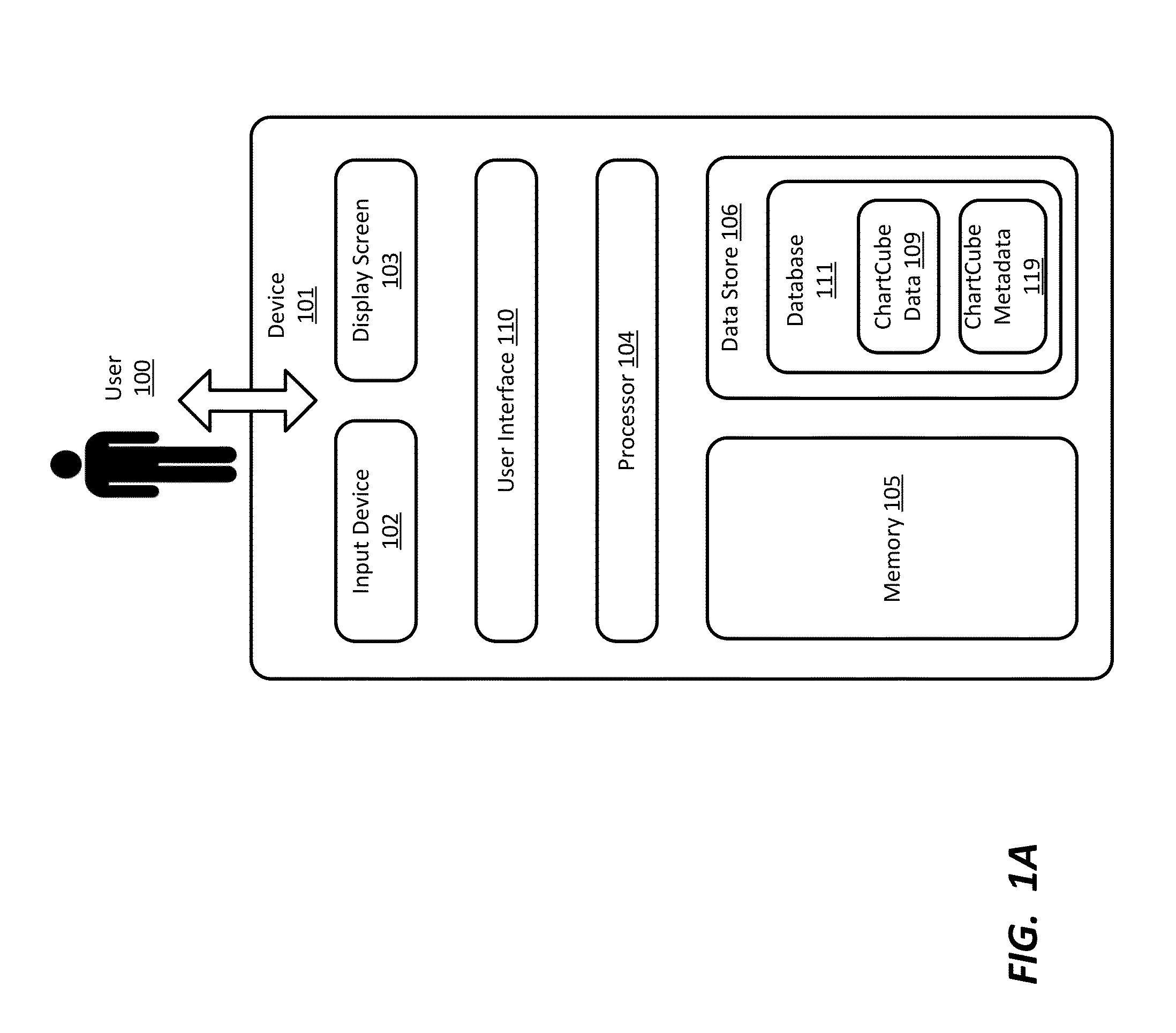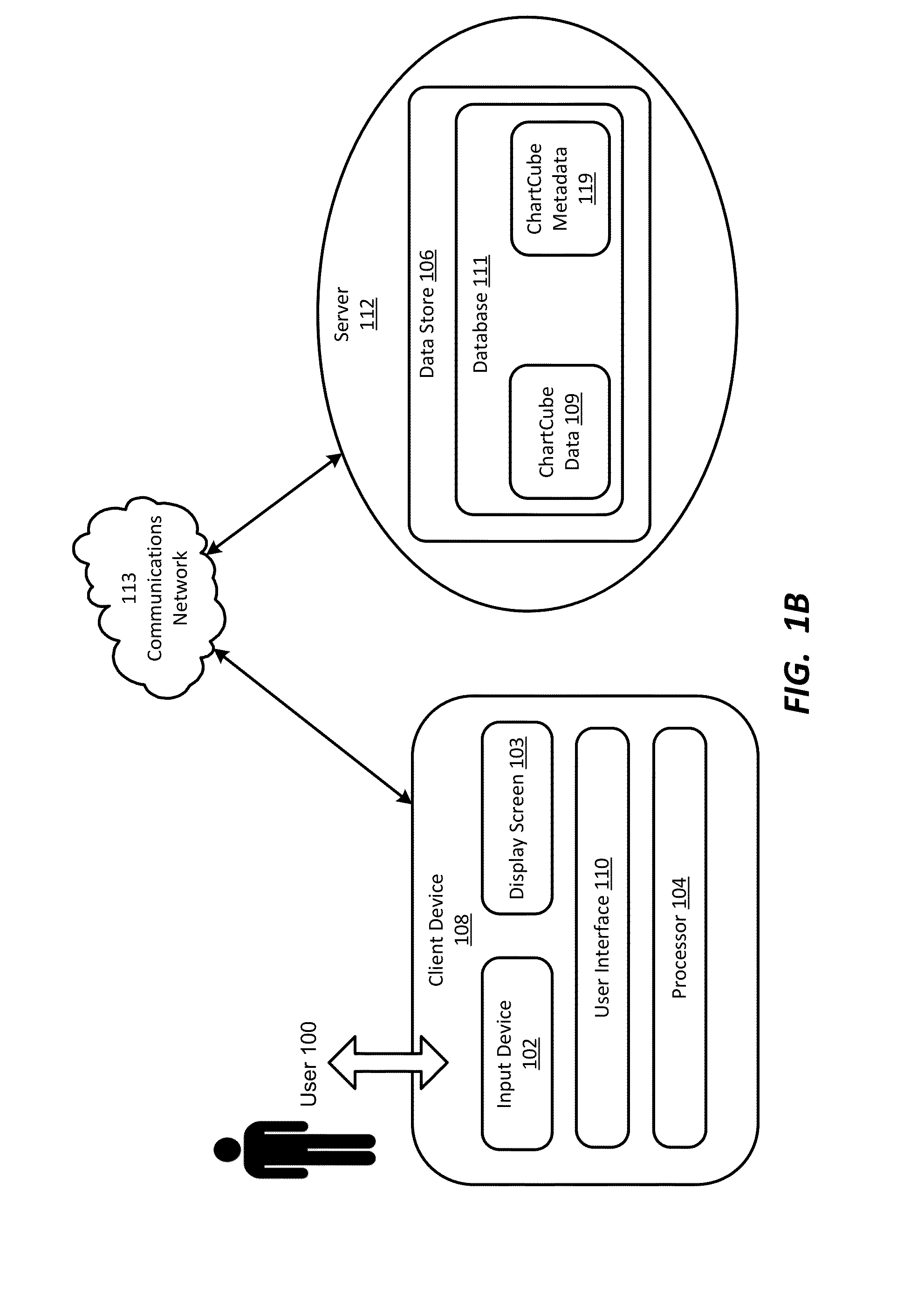Generation of metadata and computational model for visual exploration system
a visual exploration and metadata technology, applied in computing models, visual data mining, instruments, etc., can solve the problems of slow and cumbersome processing, product use difficulty, and specific training, and achieve the effect of facilitating visual exploration of quantitative data
- Summary
- Abstract
- Description
- Claims
- Application Information
AI Technical Summary
Benefits of technology
Problems solved by technology
Method used
Image
Examples
embodiment 1700
[0197]Referring now to FIG. 17, there is shown an example of a carousel embodiment 1700 for multi-faceted navigation, according to one embodiment. Carousel 1700 can be displayed on display screen 103, and user can interact with displayed carousel 1700 using any suitable input device 102. Any number of carousel rings 1702 can be provided. In the depicted embodiment, rings 1702 are oriented horizontally, so that they can rotate about a vertical axis. In another embodiment, rings 1702 can be oriented vertically (rotating about a horizontal axis) or diagonally. If multiple carousel rings 1702 are provided, they can be stacked so that they rotate about a common axis. For example, horizontally oriented rings 1702 can be vertically stacked, whereas vertically oriented rings (not shown) can be horizontally stacked. In at least one embodiment, multiple concentric rings can nested within one another; for example, as shown in FIG. 17, inner rings 1703 are nested within rings 1702. Any number o...
embodiment 1800
[0215]Referring now to FIG. 18, there is shown an example of a tesseract embodiment 1800 for multi-faceted navigation, according to one embodiment. Tesseract 1800 can be displayed on display screen 103, and user can interact with displayed tesseract 1800 using any suitable input device 102. Tesseract 1800 can include any number of nested cubes; for illustrative purposes, two nested cubes 1801, 1802 are shown in FIG. 18. In at least one embodiment, each cube 1801, 1802 has six surfaces 1803; in the example of FIG. 18, surfaces of outer cube 1801 are labeled as 1803A, and surfaces of inner cube 1801 are labeled as 1803B. Each surface 1803 can include a visualization 1101. In at least one embodiment, outer cube 1801 may be transparent or translucent so as to allow inner cube 1802 to be visible. In at least one embodiment, outer cube 1801 may not initially be transparent or translucent (so as to permit improved viewing of visualizations 1101 projected on surfaces 1803A of outer cube 180...
embodiment 1900
[0235]Referring now to FIG. 19, there is shown an example of a multi-layer embodiment 1900 for multi-faceted navigation, according to one embodiment. Multi-layer display 1900 can be shown on display screen 103, and user can interact with multi-layer display 1900 using any suitable input device 102. Multi-layer display 1900 can include any number of layer palettes 1901; in the example of FIG. 19, four layer palettes 1901A, 1901B, 1901C, 1901D are shown. In at least one embodiment, each layer palette 1901 can have any number of cells 1902, which correspond to surfaces. Each cell 1902 can include a visualization 1101.
[0236]For illustrative purposes, FIG. 19 is a conceptual perspective view 1900 that depicts the relationships among various layer palettes 1901. However, in at least one embodiment, layer palettes 1901 are displayed in a top view. Initially, top layer palette 1901A is displayed, which includes various visualizations 1101 that are organized according to dimensions and metri...
PUM
 Login to View More
Login to View More Abstract
Description
Claims
Application Information
 Login to View More
Login to View More - R&D
- Intellectual Property
- Life Sciences
- Materials
- Tech Scout
- Unparalleled Data Quality
- Higher Quality Content
- 60% Fewer Hallucinations
Browse by: Latest US Patents, China's latest patents, Technical Efficacy Thesaurus, Application Domain, Technology Topic, Popular Technical Reports.
© 2025 PatSnap. All rights reserved.Legal|Privacy policy|Modern Slavery Act Transparency Statement|Sitemap|About US| Contact US: help@patsnap.com



